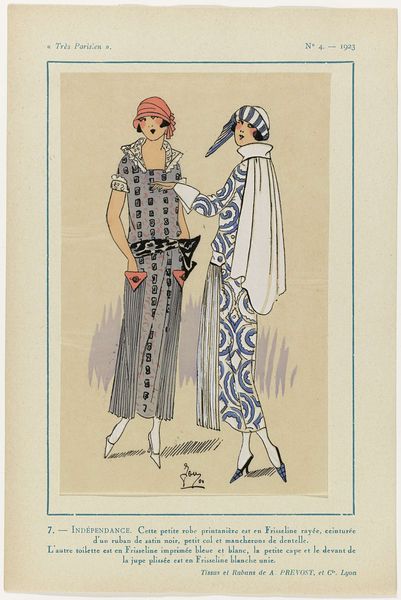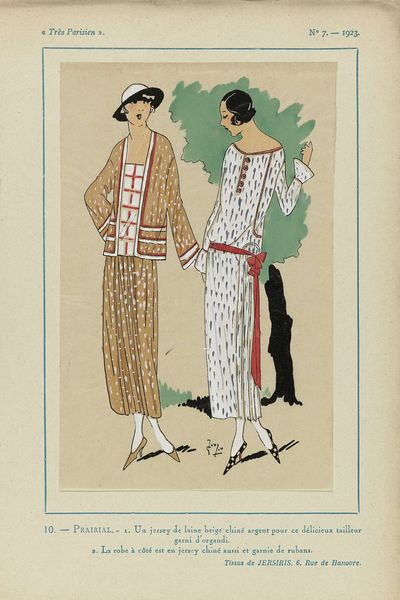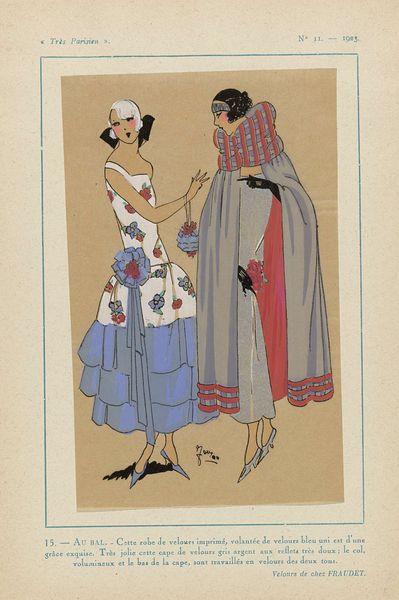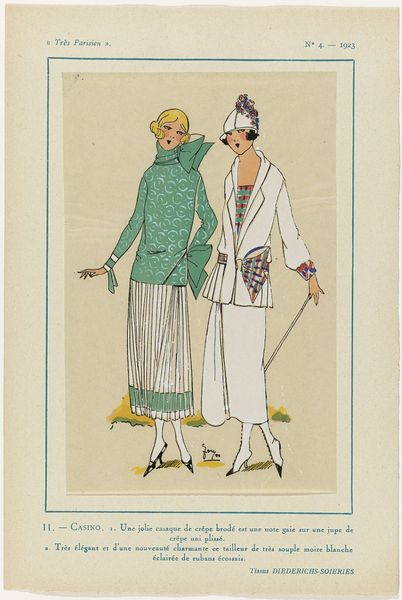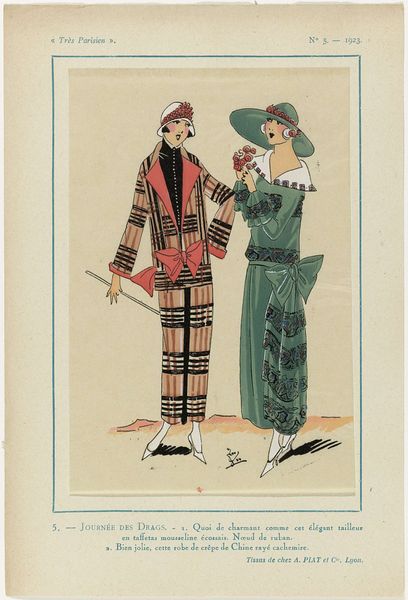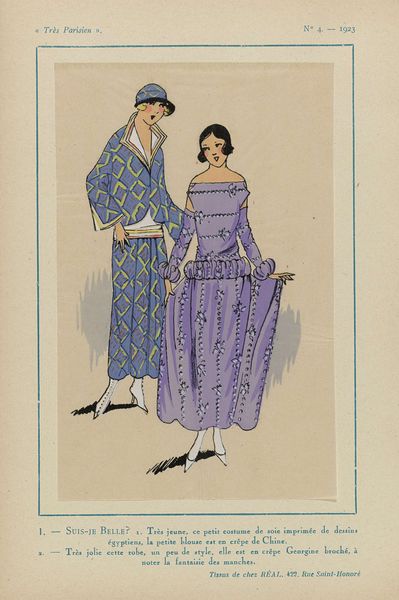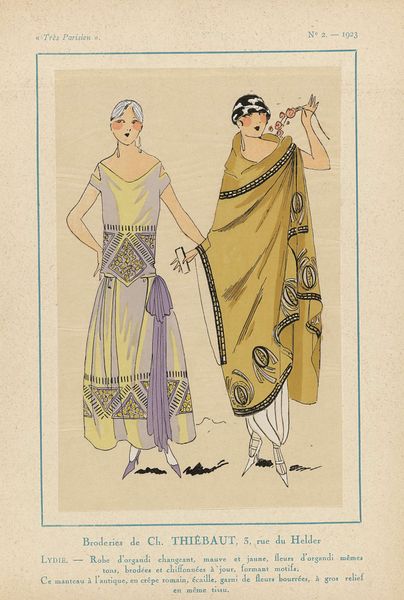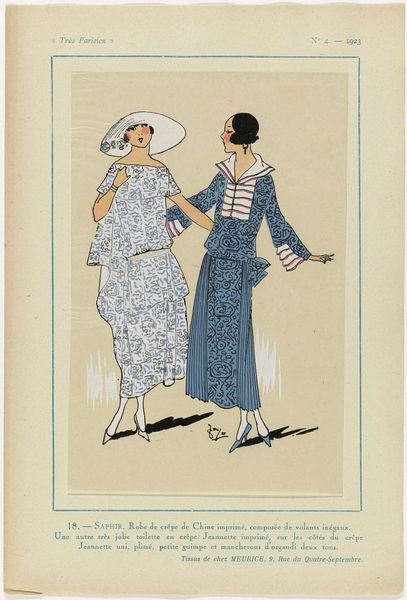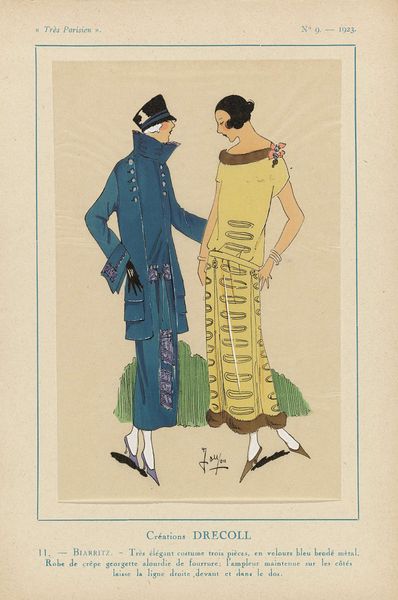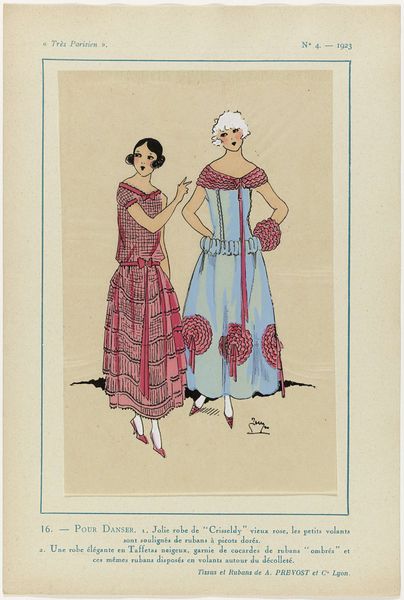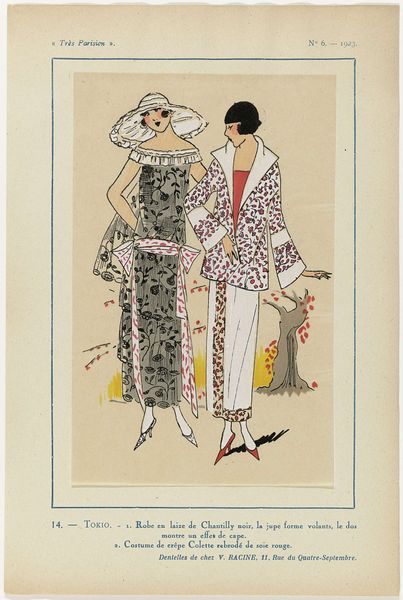
drawing, mixed-media, tempera, print
#
portrait
#
art-deco
#
drawing
#
mixed-media
#
tempera
# print
#
traditional media
#
flat colour
#
historical fashion
#
watercolour illustration
Dimensions: height 269 mm, width 180 mm
Copyright: Rijks Museum: Open Domain
Editor: This is "Très Parisien, 1923, No. 4: 13. - COBBALT. Un charmant costume..." from 1923. It’s attributed to an anonymous artist and seems to combine drawing, tempera, and print techniques. I find the bold colours and flattened perspective so striking, very modern. What stands out to you about this piece? Curator: It is quite striking, isn't it? For me, it speaks volumes about the changing role of women in the 1920s. Fashion became a powerful tool for self-expression. Editor: How so? Curator: These women, in their ‘garçonne’ style, defied traditional ideals of femininity. Look at the simplification of form, the bold embrace of color – it's a rejection of Victorian constraints, of corsets, both literal and figurative. What do you see in their postures? Do they evoke a sense of liberation to you? Editor: I can definitely see the idea of liberation. The woman in blue, especially, looks so self-assured with her cane. Almost like a dandy. Curator: Precisely. The adoption of traditionally masculine accessories further blurs gender lines. Consider also the economic and social factors: the rise of the flapper culture, increased visibility of women in the workforce…This print becomes more than just fashion; it documents a shift in power dynamics. The clothing embodies these shifts and reveals social rebellion. Editor: That's fascinating. I hadn't considered the social and political implications so explicitly. Seeing it as a document of women claiming agency and disrupting social norms makes a huge difference. Curator: Exactly. Art acts as a mirror reflecting, and often challenging, the world around it. Thinking about art as related to wider social shifts makes its complexities clearer, wouldn't you agree?
Comments
No comments
Be the first to comment and join the conversation on the ultimate creative platform.
